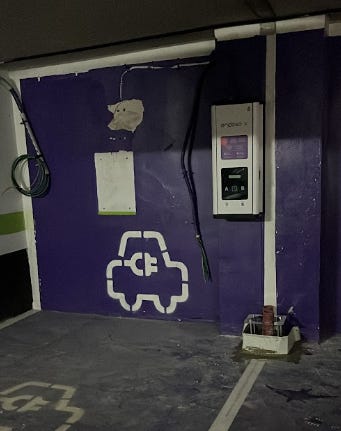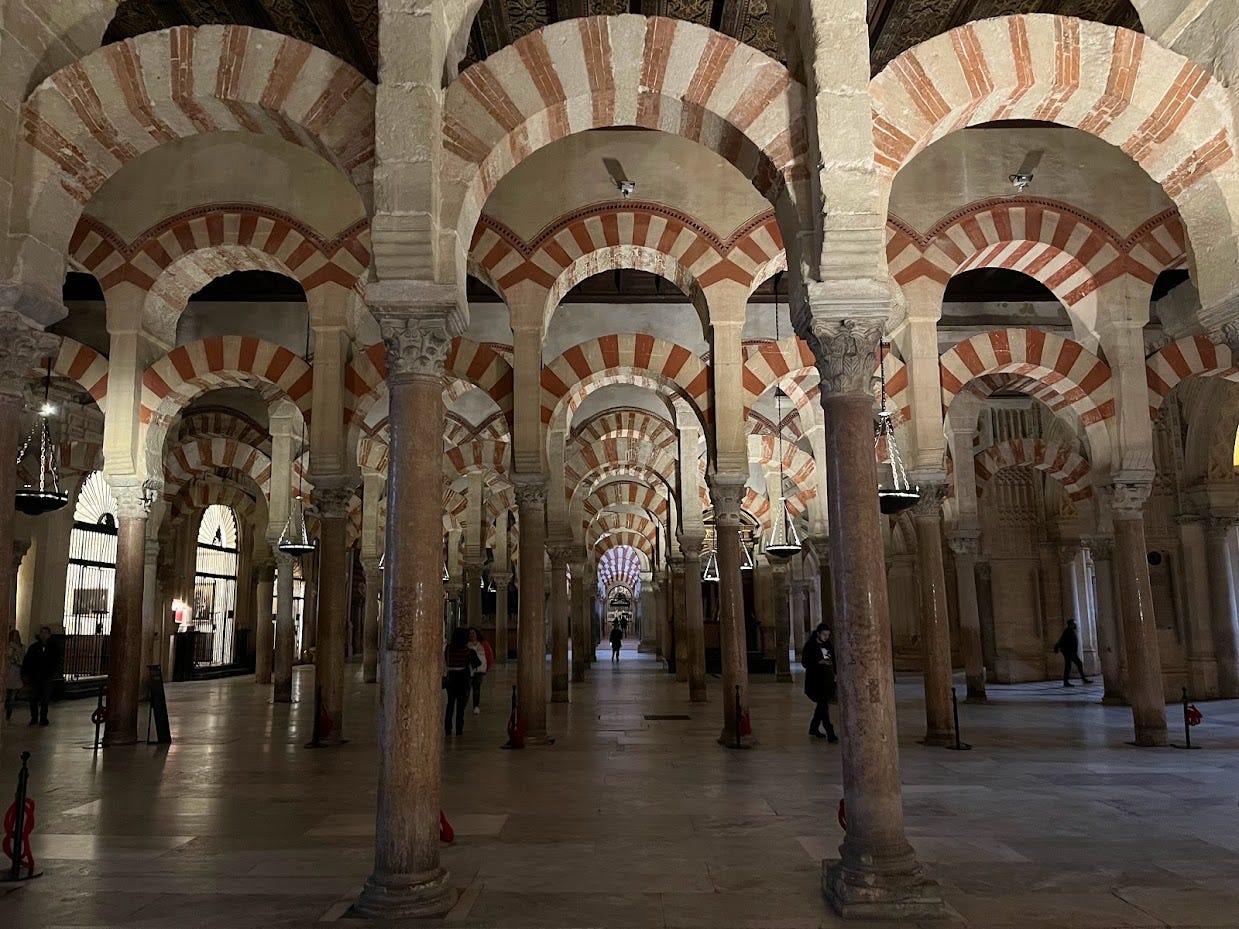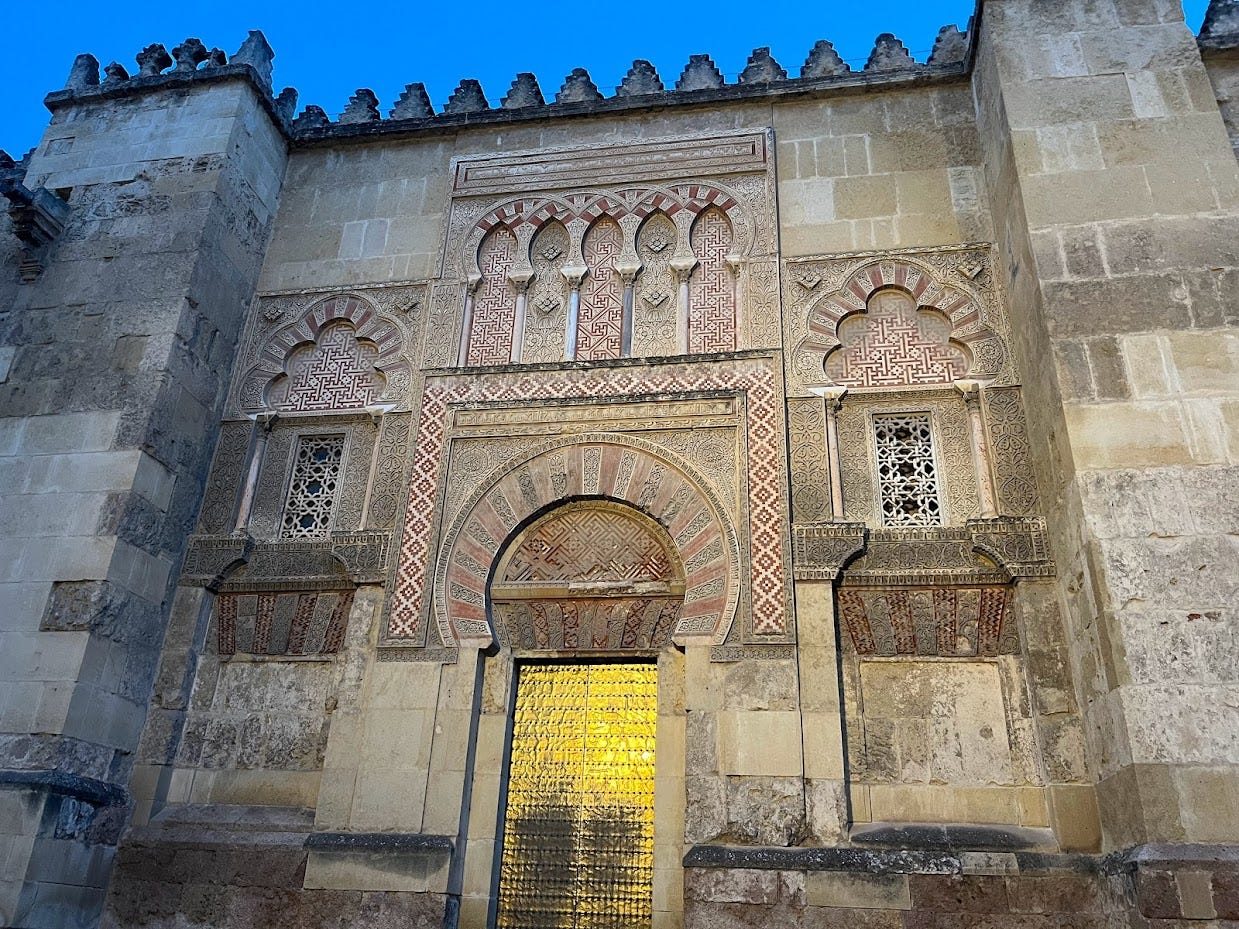Now that the new apartment is (mostly) completed – renovations are complete, all the switches are wired up correctly (thanks Lew!), stuff is finally all put away, art is hung on the walls, and we are finally healthy – we decided to embark on some adventures. We are currently taking a Portuguese government-sponsored language course, which had a break for Carnival and Ash Wednesday. That gave us a 10-day window for travel and exploration.
We are new members of a home exchange site called “People Like Us”. Here’s our listing, if you’d like to look. The site allows simultaneous exchange, non-simultaneous, and something called “Globes” which can be used similar to a credit. Within a few days of listing, Efti netted four different exchanges for this year. Our first was with a couple living in Estepona, Spain, on the “Costa del Sol” portion of the southern coast of Spain. Not a bad place to spend a few days in February, we thought.
We’ve driven Feijão to Seville before, so we know the route and the charging stations. This time, we tried a new 150kW charger in Portalegre that was very nice. It is perfectly positioned for the first leg. We met our house exchangers in Seville for lunch and an exchange of keys. One more short charge-up in Jerez de la Frontera and we were in Estepona. A 700km road trip with no major charging issues; it was not a harbinger of things to come, but it was a nice, easy trip. We even had to push against a big windstorm from Seville to Estepona due to a big windstorm.
Estepona is a cute little town, with bright flowers and colorful streets. While there, we were reminded of how difficult life can be when you are not familiar with the terrain. In addition to finding grocery stores, learning new streets, and dealing with a new language, we also had to adapt to new charging experiences. We ended up needing to download another half-dozen new charging apps, and had to learn which ones gave the best information on charger location, price, speed, and availability. We also found a couple bad addresses, a few broken chargers, and generally struggled the first couple days.
One particular evening we were very frustrated by a bad address, bad data, and poor signage, and it prompted this post on LinkedIn. We need to go from the “Charging Darwinism” of today, a scenario more like cell phone roaming, which is (now) seamless. There’s still a long way to go.

I will say that I like the Spanish system of having a scannable QR code on each charging port, that you can scan to start a charge. The trouble is that each provider has their own app that you have to download and configure first before you can scan the code. It’s simple once you have the apps, but frustrating when every new charging company requires you to download their proprietary app.
On the language and culture side, we had to adjust to not being as familiar with the language, and the faster pace of life in Spain. I thought the Portuguese drivers were aggressive! Spanish drivers drive like they’re being chased by demons. Despite numerous traffic controls – cameras, radar stations, flashing lights, speed bumps, etc,-- Spanish drivers seem determined to get their speed on. We answered “Obrigado” instead of “Gracias” for the first few days, but otherwise our improved Portuguese helped us to better understand Spanish as well. Oddly, probably due to our pronunciation, we were quickly picked out as “Portuguese” by many Spanish shopkeepers, and got a smile and a “Obrigado, bom dia!” with our change in a couple places.
We used our base in Estepona to explore many sites in Andalucía: Córdoba, Granada, Ronda, Malaga, Marbella, and Algeciras (opposite from Gibraltar). I don’t mean to make these travel diaries, so if you don’t want to read that sort of thing, go ahead and skip to the ending here.
Córdoba

We were eager to visit the historic city of Córdoba after skipping over it in 2021. It was as pretty, historic, and charismatic as we had hoped. It has a lovely old historic quarter full of crooked, narrow alleys, it has the historic Mezquita-Catedral de Córdoba which used to be a massive mosque during the time of the Moorish control of Spain and Portugal, the 2,000-year old Roman bridge, and just had a ton of charm, as befits a World Heritage site.
We enjoyed the city, and we hope to make a return visit. The weather in spring was pleasant, and the water level in the Guadalquivir River was low.

Granada/Alhambra
No visit to Andalucía would be complete without taking in the sprawling Alhambra palace and fortress complex in Granada. The Alhambra is one of the most famous monuments of Islamic architecture and one of the best-preserved palaces of the historic Islamic world. The complex sits atop a hill at the center of Granada, and has spectacular views over the city.
The buildings themselves are only part of the story; there is also an astounding array of tilework (called tessellation) and stone carving inside the palaces that is amazing to behold.
The tessellations at Alhambra apparently inspired MC Escher. The amount of mathematics and craftsmanship to build the designs and patterns on the walls is just fantastic. We spent the entire day there, more than six hours, and still didn’t see the entire complex. There was a book on the tile tessellations that I still regret not buying.
Malaga
We went to Malaga inspired to explore the Roman ruins there. There is an old Roman amphitheater in Malaga, just beneath the Alcazaba, that was uncovered beneath a cultural heritage building, which was ordered to be built by the former Portuguese dictator. At the time, they knew something was under it, but not exactly what. Later on, when conducting landscaping, they discovered the amphitheater. The cultural heritage building was eventually torn down, and you can experience the site today as a Roman audience member. We didn’t explore the Alcazaba, having just finished the Alhambra.
Ronda
I didn’t know this place existed until Efti brought it to my attention. The drive up the mountain roads was fun: lots of roller-coaster curves and fun to drive in Feijão, especially since we knew there were chargers at the top, so I could put my foot in it. We charged up while we gaped at the amazing views over the steep cliffs into the valley below, as well as the “New Bridge”, which was completed in 1793. Downtown Ronda is cute and has a vibrant downtown, but the views from the cliff and of the cliffs themselves are simply astounding. It is also home to one of the oldest bullfighting rings in Spain, but that’s not our cup of tea.
On the way home we stopped by Seville to visit the Plaza de España, which we had not been able to explore on our previous visits. It’s amazing, and we were glad we took the time out to stop by for the visit.
The Plaza was built in 1928 for the 1929 Ibero-American Exposition. It feels very much like a World’s Fair site, and is connected to a large park. There are detailed benches with individual painted tilework for each major Spanish city around the semi-circle.
A final word on public charging sites: As we travel, we’ve had the good and bad fortune to encounter some pleasant and some frustrating experiences. I file all of these away as learning to help guide decision-makers toward easier and seamless customer experiences going forward. My expertise is in charging trucks, but I have a lot of practical experience with light-duty vehicles since we’ve been driving electric cars since 2010.
We had two recent experiences that show the challenges of building a positive customer experience.
Bad: In Lisbon we entered a parking garage down a long, sloping, curved, and narrow ramp. At the bottom, we knew there were chargers somewhere on the 3 floors of parking, but we had no idea where. We spent 10 minutes driving in circles, only to find that all the chargers were in use, and by regular users who knew to bring electrical tape to hold the charger connector in place so the connection wouldn’t stop due to dropped communications (if you know, you know). Bad signage, bad communications, and poor equipment.
Good: At a second, nearby garage, we were greeted by an illuminated, flashing directional sign that pointed the way to a large bank of chargers. Many were in use, but since there were so many, there were open spots available. The site shared its data with the charging apps, as well as the price for the chargers on a per/kWh basis. Great signage, good data communication and good equipment.















Yay! A new Rustam blog post! I always look forward to hearing about and learning from your experiences as you travel around and make the Iberian peninsula your home. And I especially like the idea of being mistaken for Portuguese in Spain because of your accents. :)